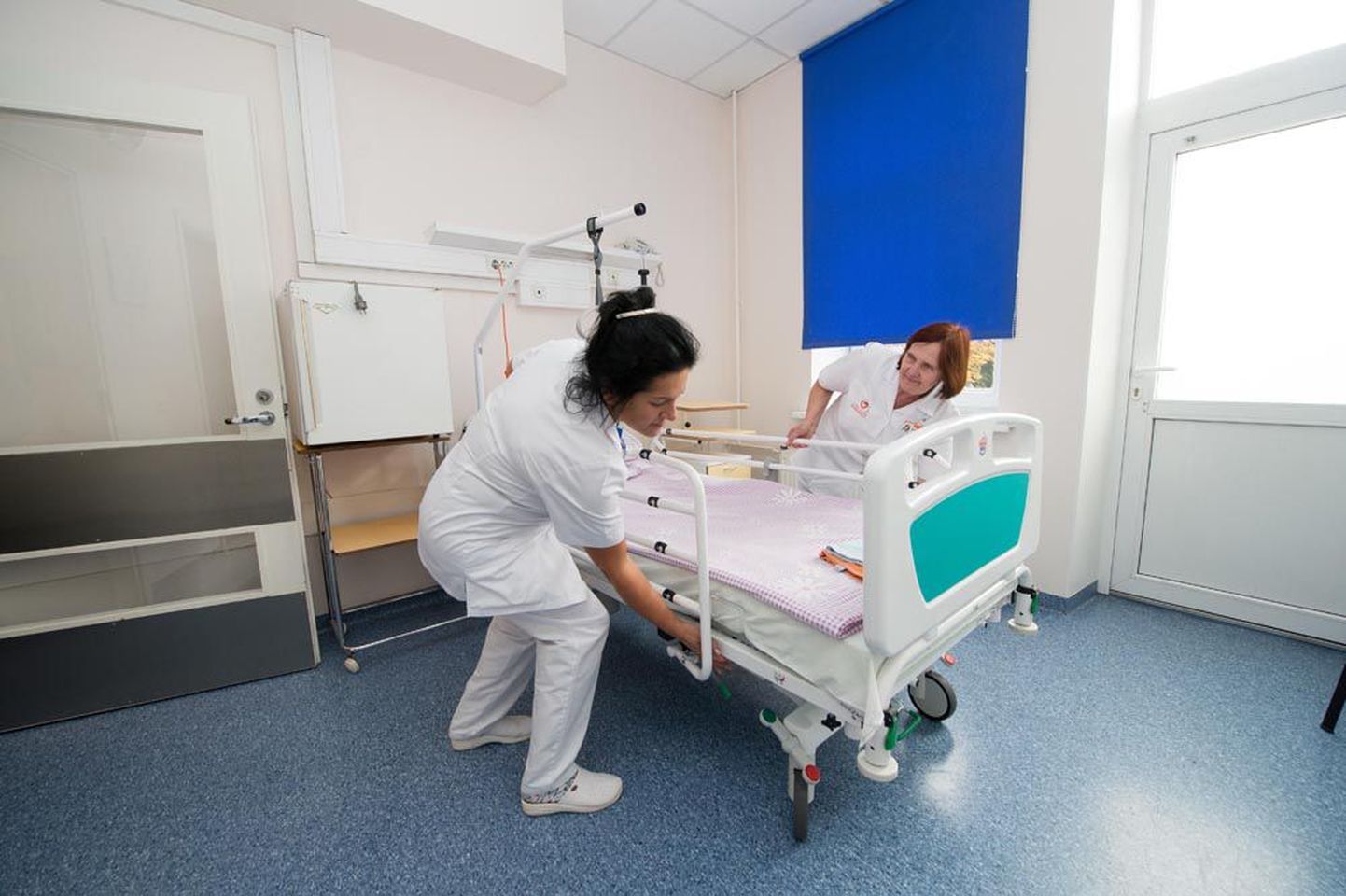
Though not in Estonia yet, ant not necessarily here soon, West-Tallinn Central Hospital infection control specialist Pille Märtin is busy as a bee. Having to keep up with breaking news, training staff and talking to the media.

Though not in Estonia yet, ant not necessarily here soon, West-Tallinn Central Hospital infection control specialist Pille Märtin is busy as a bee. Having to keep up with breaking news, training staff and talking to the media.
In Estonia, there’s just the WTCH clinic and Tartu University Hospital in readiness to receive and treat those infected.
As prescribed by Health Board, if Ebola is suspected, their official on duty is to be notified and the patient taken by ambulance to one of the abovementioned hospitals. According to Ms Märtin, the infected one will be ushered past the reception straight into an isolated ward, having a separate outside door.
But what about the individual who just feels bad, enters the reception on own feet and it is there detected that Ebola may be the issue?
Then the nurse who met the man/woman will, at first opportunity, exit the room and don protective garments. Only thereafter, having utilised every safety measure at hand, the nurse will return to the patient. The patient being taken to isolated ward by the nurse, the reception will undergo disinfection.
Still, the likelihood of an Ebola virus carrier coming thus on his own is very low.
Before dealing with the Ebola-suspected one, a health care worker will get fully and safely covered from top to toe, face included. Only then may she start asking questions and assessing the case.
Then come the medicinal judgements: will it be is fluid treatment the answer, or some other kinds of drugs against a symptom or a syndrome. Against Ebola virus itself, there is no cure.
Isolated wards are the rule with any dangerous infectious disease, thus Ebola is no exception. According to Ms Märtin, these wards come with extra washing and entry-exit options.
Also, an infection ward has negative air-pressure – to keep disease agents from getting into other parts of hospital via ventilation. On top of that the ward is armed with HEPA-filter against the tiny dust particles, to keep the air as clean as at all possible.
The other cases isolation ward is used for include chickenpox and tuberculoses, to name some. Of the more exotic ones taken home from trips, Mr Märtin mentioned African, Asian or American salmonella, A-hepatitis and the like.
Throughout the history of the hospital, recalls Ms Märtin, disease outbreaks have been the worst to sow panic.
«Ever since the letters with powder... Then, after a while, came the SARS epidemic, and people who sat next to folks of other colour on airplanes became nervous and came around asking for advice. Then came the bird flu, still present among the fowls. And after that the swine flu did its thing, before retreating to be just a seasonal one,» she said.
According to the doctor, a wider spread of the Ebola virus is just a matter of time: carried by birds and animals, over time, to places where lots of people gather, viruses learn to spread human to human.
Ms Märtin said Ebola contact infection is not so mutated yet as to spread through the air. «That would be the dark scenario, but it’s not the case right now,» she said.
When Ebola might make it to Estonia, the doc couldn’t tell. «There’s been the varying assessments, also by me. If [that should happen], then in quite a number months,» she noted.
There’s been the noise about healthcare workers infected, but Ms Märtin says that happens if protective clothing is not removed in the right order, or – out of nervousness – a person makes a wring move. Also, a patient may be in a condition not to control his movements, and thus the medical worker treating him may be thrust with some device.
For the man in the street, Ms Märtin says please don’t travel to risk area i.e. West Africa right now. «No need to play with fire, even if it seems fun and exciting,» she said. While in the infected region, said the doctor, protecting oneself is next to impossible, as in the warm climate the virus may survive on surceases for five-six days. Theoretically, the only way to stay protected would be wearing a protective costume like a medical worker.
«I dare you to do that in Africa! In a costume like that, a doctor is able to work for 45 minutes, and then has to take time off,» said Ms Märtin.
Ebola
• The virus spreads via blood or other body fluids (such as saliva, urine, excretion, sperm, droppings, breast milk) and organs of those infected. In rare occasions, infection may happen by unprotected sexual intercourse with a male patient up until seven weeks since being healed.
• Development of symptoms may take 2–21 days, with most of those affected the symptoms develop within a week of being infected.
• The usual symptoms are fever, muscle pain, weakness, head and throat ache, vomiting, diarrhoea, to which are added rash, and liver and kidney disorders. Some patients develop strong internal and external haemorrhage, and insufficiency of several organs.
• Against Ebola, there is no vaccine or specific treatment. A patient will receive so-called supportive treatment helping him to overcome the disease. The sooner the treatment is started, the better the chances to be cured. Important with the treatment is swift replacement of fluids via mouth or vein, pain killers and adequate nutrition.
• The West-African Ebola epidemic has claimed over 4,000 lives, over 8,000 have been infected.
• According to World Health Organisation (WHO), the amount of those infected may rise to 10,000 in as little as two months.
Source: Health Board, WHO